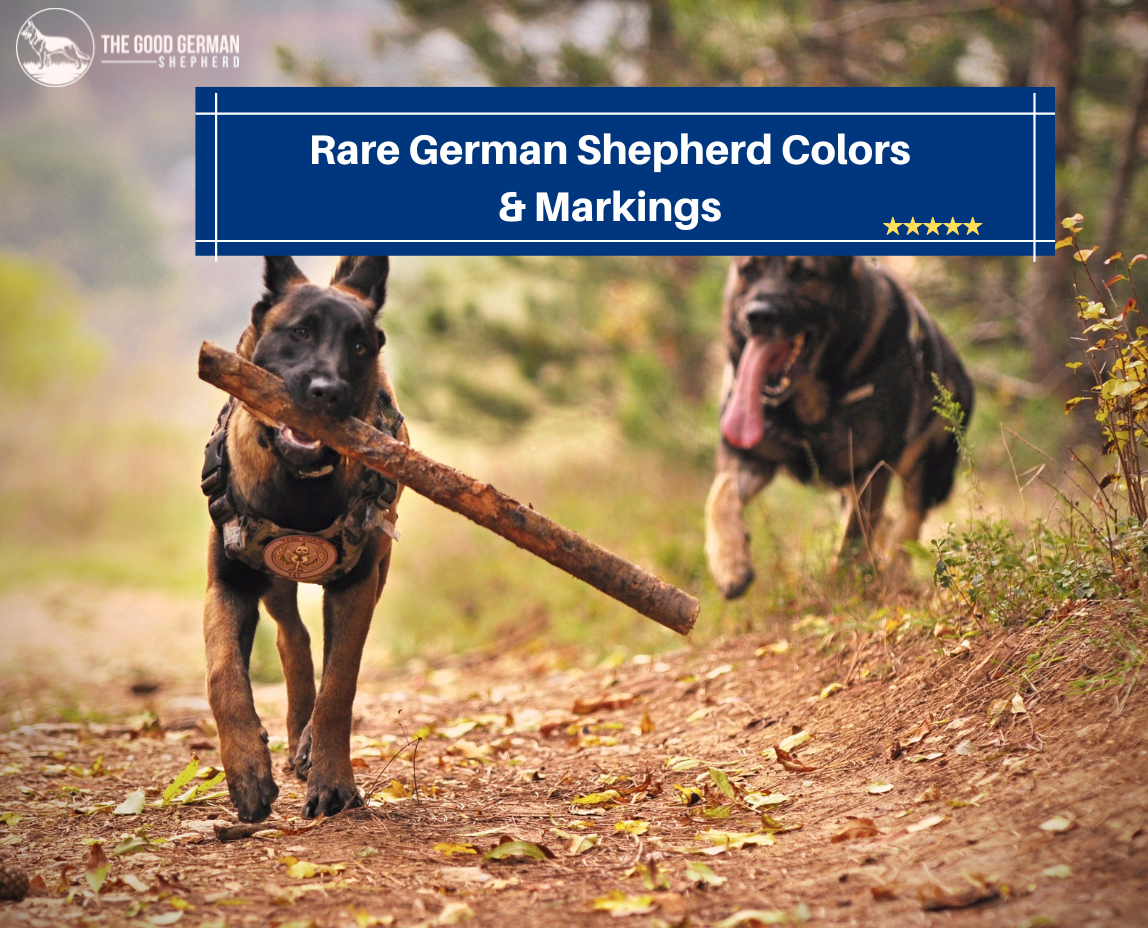When it comes time to pick out your German Shepherd, one of the things you have to consider is the color of the dog you want. There are certain colors that are more common in the breed and accepted by kennel clubs for showing.
There are other colors that are rare, and some that are even considered to be faults in the show ring. Let’s look at some of the different colors and what these German Shepherd colors mean.
Other articles you may also like: How Much Do German Shepherds Sleep? and Do German Shepherds Get Cold? You’ll Be Surprised!
Contents
Which German Shepherd Color Is The Best?
German Shepherd Dogs are available in several colors that are desirable for German Shepherd Dogs, including black, tan, and red. A German Shepherd Dog Club of America official states that the color of the coat may vary, although bright, deep hues are preferred.
Off-colors that are pale, faded, or blue or liver in color are serious mistakes. Disqualification must be imposed on white dogs. A Showline is frequently seen in Black and Red, while a Working Line is usually seen in Back and Tan.
What Are The Different Colors Of German Shepherds
German Shepherd color can vary and are sometimes even hard to distinguish. If you are looking for a certain color, you may want to choose a breeder who you know can produce the color of puppies. The colors of the parents can give you some clue of the color of the puppies but is not always the best indicator. Here are some of the most common colors of German Shepherds.
Brown And Black
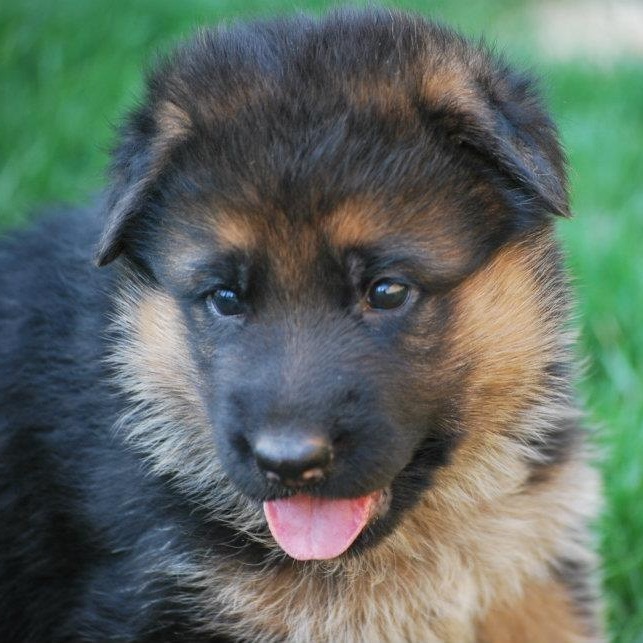
A German Shepherd’s coat is most commonly black and tan. As true as this may be, the black and brown coloration is actually one of the recessive genes when it comes to coloration. They usually have black on their backs as saddles, and they also have black printed across their faces like masks.
They have light to dark tan coloring on their chests, sides, underbellies, and necks; the depth of the tan is generally determined by their parents and genes. Puppies have a darker coat color than adults do, but as they mature (and outgrow their fluffy puppy coats), their coats become more tan. This coat coloration is common among German Shepherds and is best used for show competitions.
Red
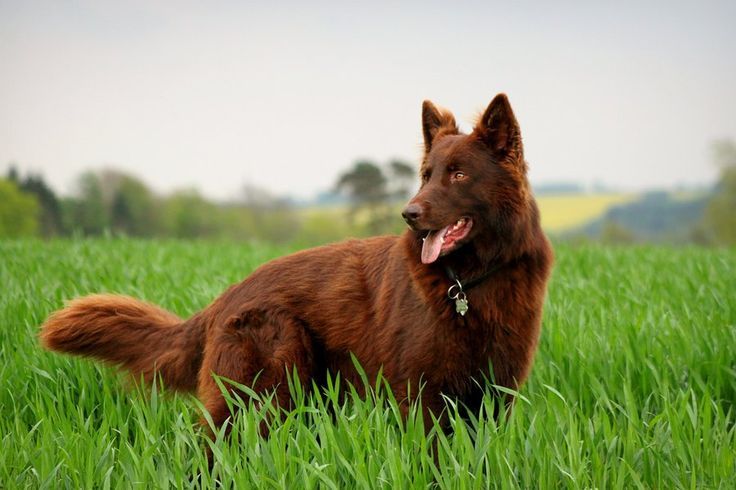
Red is a recessive gene, but it’s pretty common, particularly in the sable pattern, where a red hue is contrasted with black on the German Shepherd. Geneticists generally note that red is the most recessive of all recessive genes. Furthermore, fawn-coated dogs tend not to fade over time as red dogs with a liver gene do, so breeders might keep them apart from red dogs.
Black And Cream
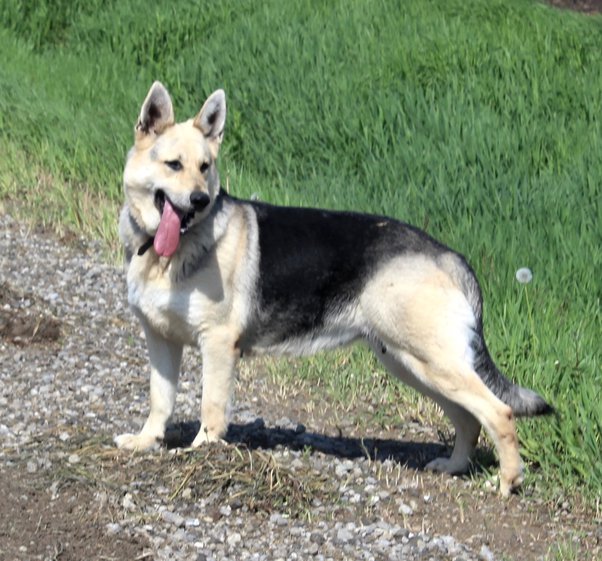
German Shepherds with black and cream coats are simply lighter versions of their black and tan counterparts. They will also wear a mask of black fur covering their faces and a black saddle-like pattern on their backs. In contrast to a dark coat, this one is lighter in color.
Fawn

A fawn-colored German Shepherd is a fairly rare breed, but has been around for a long time. When white German Shepherds breed with another color, they often create litters with these mutations.
Colors such as fawn, which resemble the fur of a newborn deer, fall under the sable category, which comprises various red shades. Fawns are also referred to as sables. It is possible to combine fawn with black, liver, and other fawn colors in the German Shepherd spotted pattern.
Silver

One of the most beautiful variations of this breed is its silver coat color. Working German Shepherd bloodlines produce these dogs.
It is less popular to show lighter-colored Shepherds than those with strong darker colors. Their silver appearance is not fully understood, however due to their rarity, it is thought to be caused by a recessive trait. A silver Shepherd’s appearance is similar to the black and tan variation, but the extensive tan markings have been replaced with silver.
Black

While German Shepherds are popular among pet owners, they are not all black. Because black German Shepherds are not considered undesirable or defective, the American Kennel Club allows them to compete in dog competitions, unlike white or other light colored German Shepherds. They can be a product of two black parents or a combination of black and another color.
Steel Blue
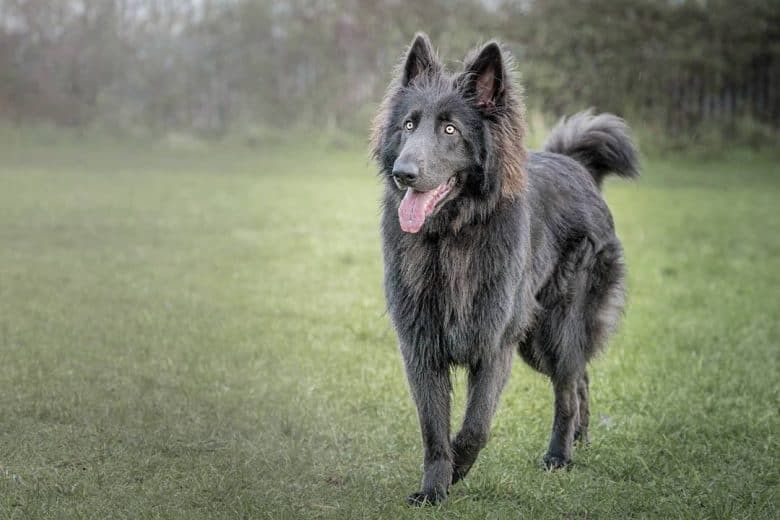
German shepherds are extremely rare in blue color variations. Nevertheless, this color variation has been declared a fault, much like the German Shepherd’s liver color. The American Kennel Club recognizes this color despite it being classified as a definite fault.
A recessive blue gene is responsible for the blue pigmentation in this coat variation. German Shepherd puppies with this recessive gene must be bred by both parents.
In spite of their rarity, blue breeds have become a fashion choice instead of working or showing lines. They have a gray nose instead of a black nose, which is a significant difference in appearance.
White
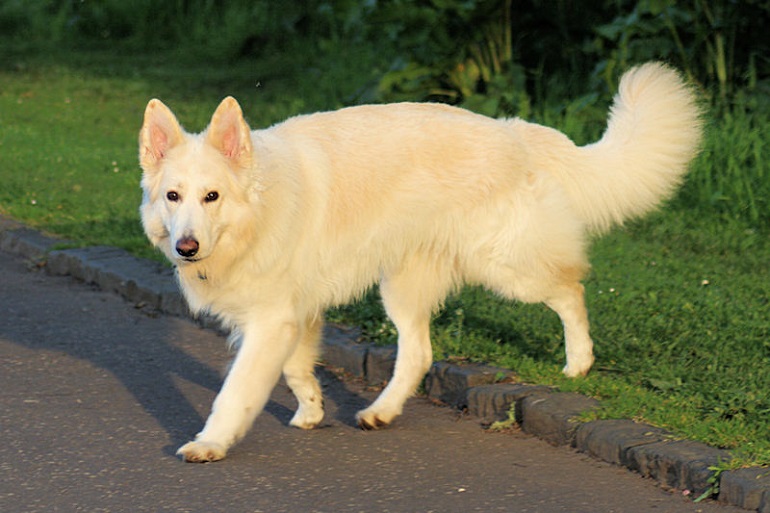
Recessive genes result in white-coated German Shepherds, which are quite rare. Late nineteenth-century German breeding programs produced the first white German Shepherd. It is possible for white German Shepherds to produce puppies with colors, just as it is with any recessive characteristic.
They behave the same as stereotypical German Shepherds, so extra care isn’t necessary since they are similar. They have been banned from competing in dog shows for their color, which they consider a flaw.
Sable

This classic coloration is caused by the dominant gene “agouti”. Horand von Grafrath was born in 1895 and went by the name Horand von Grafrath. There is a long history of coloration in German Shepherds, which shows how deep this gene pool runs.
As a result of its genetic heritage, sable shepherds are less popular than black and tans. The black and tan breed has, however, gained popularity due to its attractive appearance.
German Shepherds have sable coloring, which is not a solid color, but actually produces an ombre effect by blending light and dark pigmentations together. As the fur grows toward the tip, some of the sable hairs turn black.
Red Sable
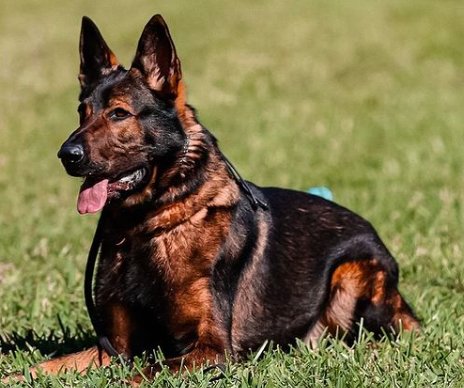
In addition to their sable coats, German Shepherds have a red sable color due to the agouti gene being dominant.
There is, however no dilution of gene expression in this coat, as the usual tan is replaced with a deep reddish brown.
There is an intermingling of red and black in most areas of their body as a result of this coat coloration.
Gray
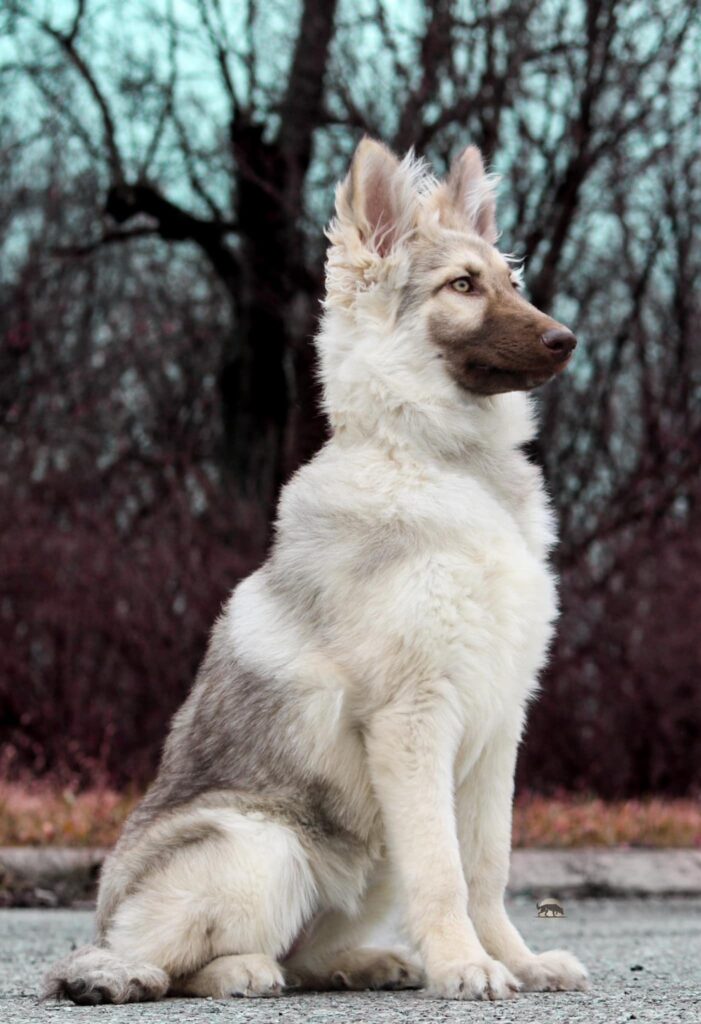
Generally speaking, silver/gray German Shepherds are quite rare, and they look quite different from tan and black German Shepherds. It’s important to note that German Shepherd DNA does not contain a “silver gene.” Instead, gray German Shepherds are a product of an agouti gene interacting with a red-hued color pool. A grayish or tan appearance is the result of the mix, which dilutes the dog’s fur.
Bi-Color

The bi-colored German Shepherd dog coat is a variation of the traditional black and tan coat.
There is a difference between this breed and others with regard to the presence of black in the coat as opposed to tan in the coat. Black may be the dominant color in their coat by a ratio of 9:1.
German Shepherds with bi-color markings are often confused with pure black ones. German Shepherds classified as bicolor are defined as having any color (no matter how small) showing through their black fur.
Having lived in the White House for so long, the bi-color German Shepherd became a household name. The Kennedy family owned a bi-colored Shepherd named Clipper named after John F Kennedy. Its striking appearance increases the popularity of the bi-colored German Shepherd.
Blue
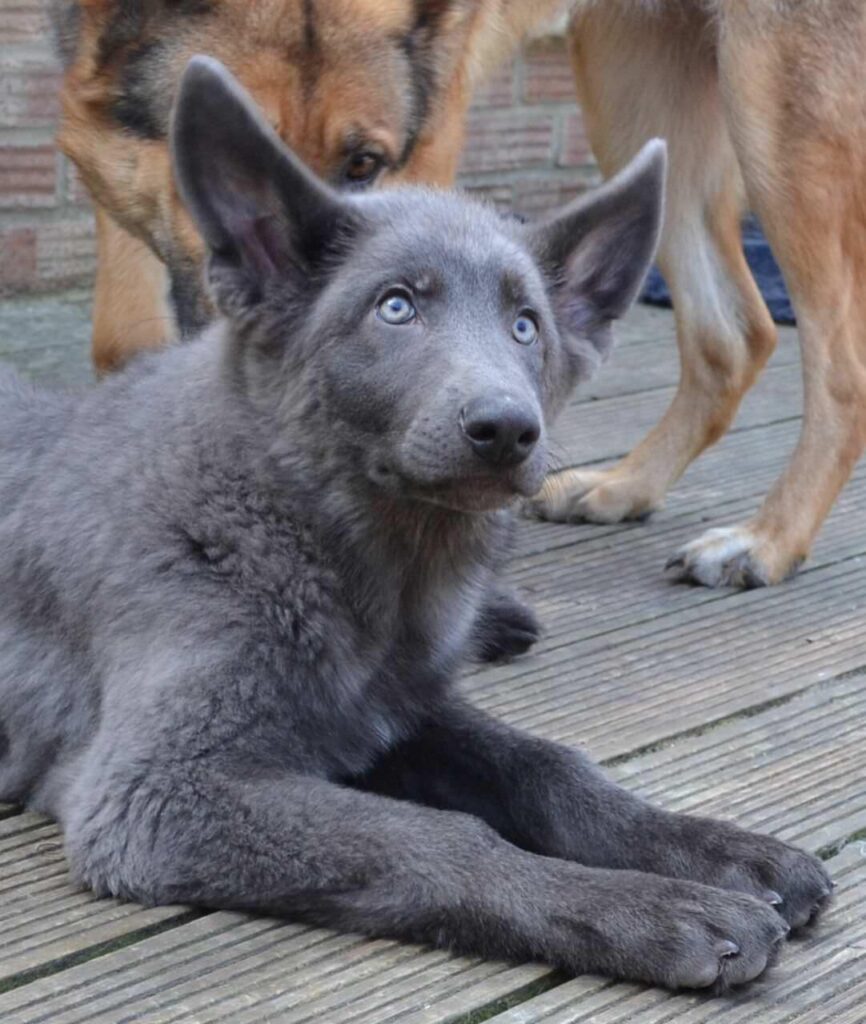
The blue German Shepherd is a recessive combination of genes, just like its liver-coated counterpart. In terms of genetics, the main difference between the two comes down to how the “blue” and “liver” genes interact with each other.
Black genes are blocked entirely by the b locus gene, while blue genes are partially blocked by the blue locus gene. Thus, blue German Shepherds are much darker than liver German Shepherds. It should be noted that these dogs are not blue in colour, but instead have a gray coat with a bluish hue.
Black and Silver
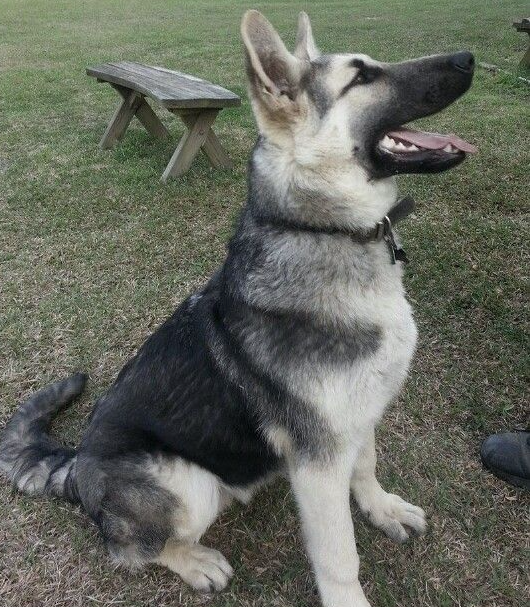
Black and silver GSDs have a bit more exotic appearance than black and tans, but follow a similar color pattern.
There will be black on the dog’s face and along their back and the bottom of his/her body will be silver or gray in color. It is possible for individuals to have significantly different color distributions.
As well as the color, there are other variations to consider. It is possible to have various shades of black in the same coat, which can range from gray to a deep inky black.
Liver
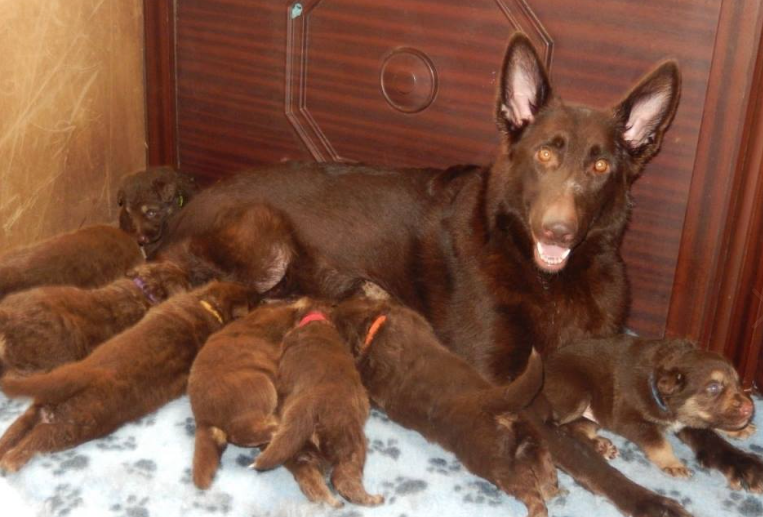
The liver-colored German shepherd is a rare breed, resulting from recessive mutations at the B locus. There are several combinations of liver coats, however, since liver shade cannot affect pattern. A German Shepherd’s most common color is solid brown, liver and tan, or liver and white.
Typical tan and black German Shepherds display these symptoms in the same manner. The liver coat of a German Shepherd stays the same throughout its lifetime, unlike some other German Shepherd colors.
Panda
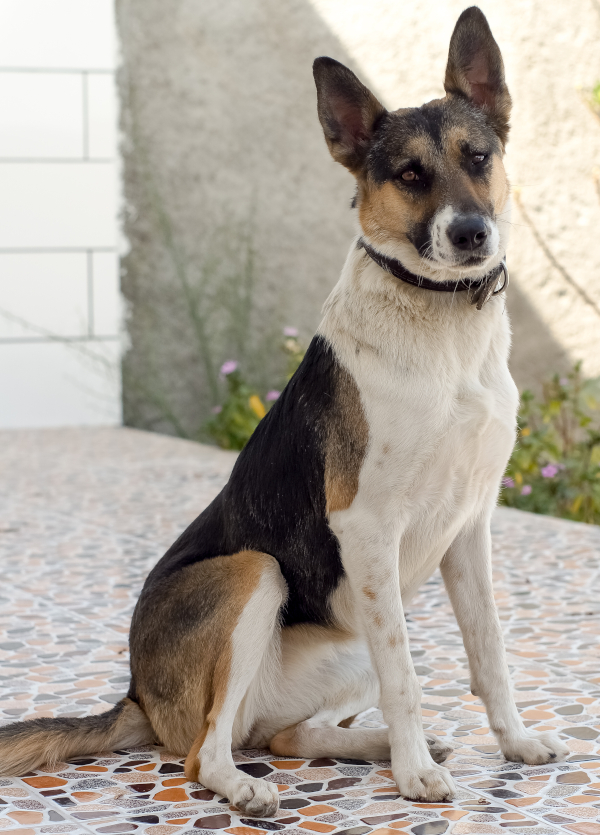
There is only one type of coat color combination that is more rare than a German Shepherd with a panda pattern, commonly called “Piebald.” It is typical for these German Shepherds to have symmetrical patterns on their coats. Genetically, this type of dog has the same characteristics as an average tan and black German Shepherd; the only difference comes from its color combinations, which are caused by the KIT Gene mutation.
Isabella
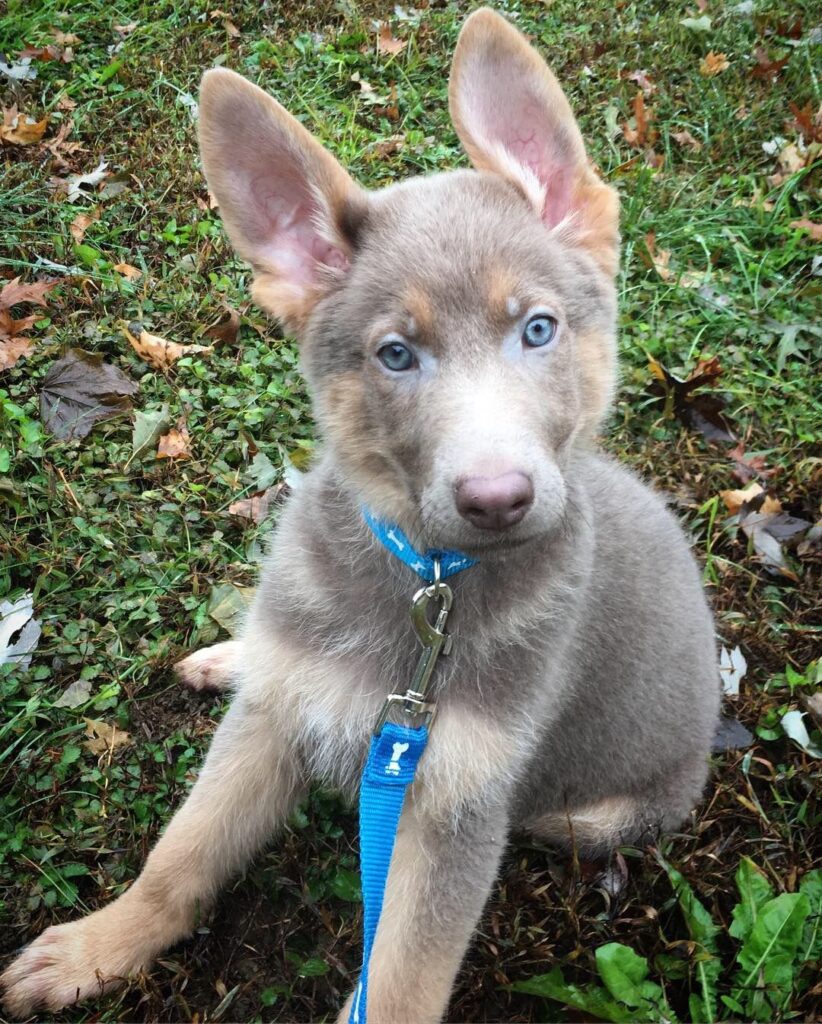
Isabella German Shepherds share identical fates to white German Shepherds, where the dogs are admired and coveted for their looks but disqualified at dog shows. It is the AKC’s view that they are at fault, just as liver dogs are viewed negatively. It’s no surprise that Isabella GSDs look like lavender-flavored cappuccinos.
No matter what their gender is, they look distinctly feminine when raised with a family. As a result of their non threatening appearance, they are commonly welcomed in suburban communities, while new pets may be subjected to unfair scrutiny.
Due to the rarity of Isabella GSDs, they do not always have studs that exhibit recessive traits. A dominant feature of a stud is its color, which is often desirable.
There are only a few instances when the colors blue and liver are combined for breeding in an isabella color. Therefore, only blue genes can cross over to non-blue breeding stock, which is unlikely. It is for this reason that Isabella German Shepherds are the rarest breed of German Shepherds.
Brindle

As with sable, brindle German Shepherds have spots of different colors in stripes or marbled patterns similar to tiger stripes. Brindle shepherds come in a variety of colors, ranging from black and gray to black and tan. As a result, the black is more prominent, and they resemble German Shepherd dogs most closely.
As seen in the image, they are generally called brindles in black, brindles in tan, brindles in gray, or brindle sable. The American Kennel Club deems these colors “washed out” and they cannot be shown.
Blanket

Blankets are also patterns without color. Only a portion of the German Shepherd’s body and some of its chest are occupied by contrasting colored fur, as the darker shade goes beyond the saddle. It is just as important to be bicolor as a saddle GSD for spotting.
A saddle German Shepherd stands a greater chance of winning a dog show compared to a blanket one. It’s due to the fact that the blanket doesn’t leave much room for any alternative color, which is usually red, cream, brown, or gray.
Because these blankets are dark, police and protective patrols often use them because they give off a sense of intimidation. Having the same connotations as a guard dog, they would be an excellent guard dog.
What Are The Fault Colors For German Shepherds?
The faults colors for German Shepherds can vary by each club and what one considers a fault, another may allow. Saddle, blanket, bicolor, sable, and solid colors are common coat colors and patterns on German Shepherds.
Based on the AKC founder’s philosophy, no pure-bred German Shepherd Dog can be denied registration for color based on its working abilities.
The AKC accepts coat colors and patterns less commonly seen in German Shepherds, e.g. white, liver, blue, Isabella, and Panda German Shepherds (if DNA testing is conducted). Dogs of these colors are not allowed to compete in the conformation ring as these characteristics are considered faults under the German Shepherd breed standard.
Show rings are also very strict when it comes to dogs with the liver gene or recessive dilution gene, which produces either blue dogs or Isabella dogs.
How Rare Are Panda German Shepherds?
There is a genetic mutation that causes white spotting on Panda German Shepherds, which differs from ordinary German Shepherds. It is not always the case that they look exactly like pandas. Various types of spotting can be seen on them.
The white markings, however, are prominent enough to have given the species the name “panda.”.
Possibly this mutation occurred at an early age in the breed. As of 2000, the first instance had been recorded. There was a spontaneous development of this gene in a female. Crossbreeding was initially assumed to be the cause of the dog’s condition.
UC-Davis genetic testing revealed, however, that there had been a mutation. The gene that encodes this protein is called CD117. Her AKC registration and DNA test confirmed her purebred status, as well as her lineage.
Due to the dominant nature of this gene, any dog with one copy will be affected by the coloration. The disease appears to be lethal to embryos, however. Developing correctly and surviving long enough to become a puppy is impossible if the puppy inherits two Panda genes.
The breed standards do not recognize this coloration, so there is some controversy surrounding it. The fault is considered to be there.
A number of breeders also claim that crossbreeding causes the gene, despite scientific evidence to the contrary. Some people claim dogs are from inferior stock, but there is no evidence for either claim.
Conclusion For “Rare German Shepherd Colors & Markings”
In conclusion, German Shepherds come in a myriad of stunning colors, each with their own unique appeal. The common colors are typically more preferred in show rings, and include variations such as black and tan, red, sable, and bi-color. There are also rare and unconventional colors such as blue, liver, Isabella, and the unique panda pattern. These color variations, while disqualified in the show ring, are often sought after for their distinctive and beautiful appearance.
